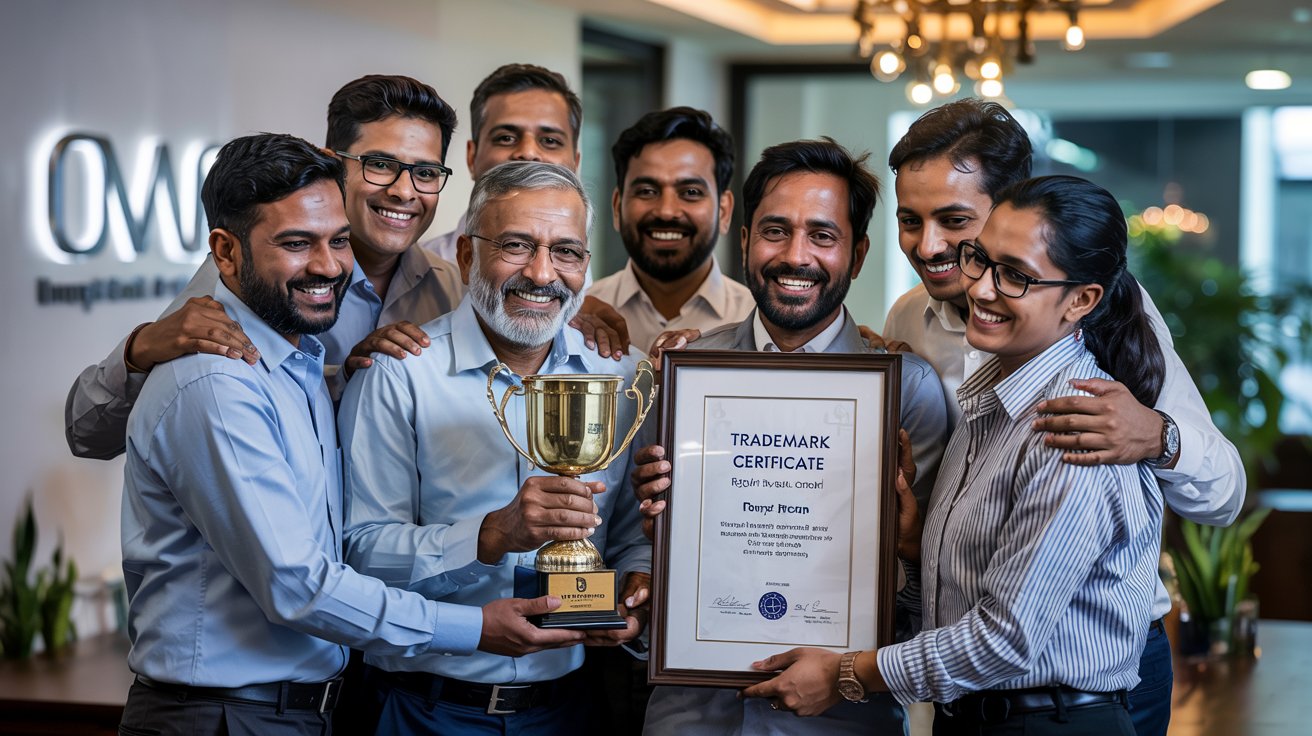In today’s fast-evolving healthcare industry, success is not just about innovation — it’s about protection, trust, and branding.
For leading medical companies, securing their products through Trademark Class 10 has been a key growth strategy.
In this blog, we’ll dive deep into how Class 10 trademarks helped top medical brands scale their businesses and dominate the global healthcare market.
We’ll also show you how you can apply these strategies to grow your own medical brand.
Let’s get started!
What is Trademark Class 10?
Before we explore success stories, it’s important to understand the basics.
Trademark Class 10 covers medical, surgical, dental, and veterinary apparatus and instruments, including but not limited to:
- Surgical tools
- Diagnostic equipment
- Dental devices
- Prosthetic limbs
- Medical furniture
- Patient care apparatus
When you trademark your medical products under Class 10, you legally protect your brand name, device name, and logo — preventing competitors from copying or misusing your brand identity.
In short:
Class 10 trademarks = Legal security + Brand value + Business growth.
Why Class 10 Trademarks Are Essential for Scaling a Medical Business
Here’s why Class 10 trademarks matter so much, especially for scaling:
| Reason | How It Helps Scale |
|---|---|
| Brand Protection | Secures brand from counterfeits and imitators |
| Customer Trust | Builds confidence among doctors, hospitals, and patients |
| Market Differentiation | Stands out in a competitive healthcare market |
| International Growth | Easier global registration and expansion |
| Higher Business Valuation | Investors prefer brands with protected IP |
| Licensing and Franchising | Monetize your brand safely |
Without proper trademark protection, scaling becomes extremely risky and slow — especially in the medical sector, where quality and trust are everything.
Real-Life Examples: How Top Medical Brands Used Class 10 Trademarks to Grow
Let’s take a look at real success stories where Class 10 trademarks played a major role in business expansion.
1. Medtronic: Protecting Every Innovation
About the Brand:
Medtronic is a world leader in medical technology, providing devices like heart pacemakers, insulin pumps, and surgical equipment.
Trademark Strategy:
- Filed Class 10 trademarks for devices like MiniMed (insulin pump) and Infuse (bone graft device).
- Consistently trademarked each innovation before market launch.
Result:
- Protected their high-end devices globally.
- Built massive brand loyalty among healthcare providers.
- Opened doors for partnerships with hospitals worldwide.
Lesson:
Trademark every major product innovation early to secure first-mover advantage.
2. Boston Scientific: Building a Trademark Portfolio
About the Brand:
Boston Scientific specializes in minimally invasive medical devices.
Trademark Strategy:
- Created a strong trademark portfolio under Class 10, covering brands like TAXUS (stents) and Watchman (stroke prevention device).
- Strategically filed in both domestic and international markets.
Result:
- Established dominance in cardiovascular, respiratory, and digestive healthcare sectors.
- Scaled rapidly by licensing and franchising under protected brands.
Lesson:
Think of trademarks as a portfolio investment, not just a legal formality.
3. Stryker: Trademarking Surgical Robots
About the Brand:
Stryker is known for orthopedic implants, surgical equipment, and robotic surgery systems.
Trademark Strategy:
- Protected product names like Mako (robotic-arm surgery platform) under Class 10.
- Trademarks were filed along with patents for maximum IP protection.
Result:
- Gained leadership in robotic-assisted surgeries.
- Scaled by offering cutting-edge, branded technology solutions to hospitals worldwide.
Lesson:
Combine patents and trademarks for a powerful growth strategy.
4. Becton Dickinson (BD): Trademarking Everyday Essentials
About the Brand:
BD manufactures devices like syringes, catheters, and blood collection systems.
Trademark Strategy:
- Protected everyday healthcare essentials like BD Vacutainer and BD Venflon under Class 10.
- Invested heavily in brand awareness campaigns.
Result:
- Became a trusted name across hospitals globally.
- Scaled business by making BD products a default choice in tenders and government supply chains.
Lesson:
Don’t ignore “small” products — trademarks can make them global essentials.
5. Philips Healthcare: Trademarking Integrated Healthcare Systems
About the Brand:
Philips Healthcare provides diagnostic imaging, patient monitoring, and home care solutions.
Trademark Strategy:
- Registered brands like IntelliVue (patient monitors) and HeartStart (defibrillators) under Class 10.
- Extended trademarks into related classes for software and electronics (Class 9).
Result:
- Built a unified brand identity across healthcare and technology sectors.
- Scaled faster by offering integrated solutions.
Lesson:
Trademark your platform, not just products — today’s healthcare is interconnected.
The Role of Class 10 Trademarks in International Expansion
Once companies establish a strong brand locally, Class 10 trademarks make international scaling much smoother.
- Madrid Protocol Filing: With one application, medical brands extend their trademark protection across 100+ countries.
- Easier Regulatory Approvals: Protected brands face fewer disputes during FDA, CE Marking, and other approvals.
- Brand Recognition Abroad: Doctors and hospitals recognize and trust trademarked names faster than generic ones.
Bottom line:
If you dream of selling globally, your Class 10 trademark is your passport.
How You Can Scale Your Medical Brand Using Class 10 Trademarks
You don’t need to be a Fortune 500 company to benefit from this strategy!
Here’s a simple 5-step plan you can follow:
1. Identify What to Trademark
- Company name
- Major product names
- Technology platform names
- Logos and slogans
2. File for Trademark Protection
- File under Class 10 for medical devices.
- If relevant, file under other classes (like Class 9 for software).
3. File Early
- Always file trademarks before launching a product.
- This prevents others from stealing your brand identity.
4. Plan for International Protection
- Use the Madrid Protocol if you plan global expansion.
- Protect your brand in major markets like the US, EU, and Asia.
5. Promote Your Trademarked Brand
- Highlight your trademark status in marketing and sales materials.
- Build brand trust with patients, doctors, and hospitals.
Common Mistakes to Avoid When Using Class 10 Trademarks
Even big brands sometimes make costly errors. Avoid these mistakes:
| Mistake | Why It’s Risky |
|---|---|
| Delaying Trademark Filing | Competitors may register first |
| Filing in Wrong Classes | Leaves your brand vulnerable |
| Not Renewing Trademarks | You lose rights after expiry |
| Ignoring International Protection | Risk of brand theft abroad |
| Not Monitoring Infringements | Copycats can dilute your brand |
Remember: Trademarks are not a one-time action — they require ongoing management.
Conclusion: Class 10 Trademarks Are a Growth Engine for Medical Brands
If you look closely, the common success factor among top medical companies is clear:
They treated trademarks as a core business strategy, not just legal paperwork.
By protecting their innovations under Class 10 early on, brands like Medtronic, Boston Scientific, and Stryker:
✅ Safeguarded their products
✅ Built patient trust
✅ Expanded internationally
✅ Attracted investors and partners
If you’re building a medical business — whether it’s surgical tools, diagnostic equipment, or healthcare technology — securing a Class 10 trademark could be your launchpad for bigger growth.
Ready to Protect Your Medical Brand?
At VMK Professionals, we specialize in:
- Class 10 Trademark Registration
- Multi-Class Trademark Strategies
- International Trademark Filing (Madrid Protocol)
- End-to-End Trademark Management
🚀 Take the smart step today.
👉 Contact VMK Professionals for a free consultation and start scaling your brand with confidence!


